Just finished (and delivered) my twelfth guitar, and my first commission. Special treat, as this was for my Uncle Jon who was largely responsible for getting me into woodworking as an adult (with a well place highly motivational copy of FWW when I first met him 30 years ago).
It was a total surprise for him too!
Claro Walnut tonewood, Curly Koa accents, Black walnut neck, Carbon fiber D-tube truss rod and axial brace, Mother-of-Pearl inlays, Indian Rosewood fretboard and bridge
It was a total surprise for him too!
Claro Walnut tonewood, Curly Koa accents, Black walnut neck, Carbon fiber D-tube truss rod and axial brace, Mother-of-Pearl inlays, Indian Rosewood fretboard and bridge
Attachments
-
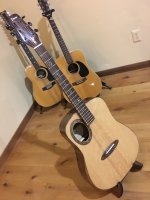 IMG_2922.jpg231.3 KB · Views: 339
IMG_2922.jpg231.3 KB · Views: 339 -
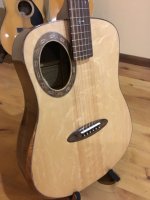 IMG_2923.jpg204.2 KB · Views: 258
IMG_2923.jpg204.2 KB · Views: 258 -
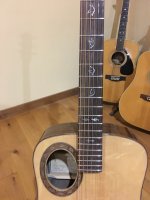 IMG_2925.jpg222.8 KB · Views: 210
IMG_2925.jpg222.8 KB · Views: 210 -
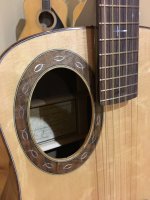 IMG_2926.jpg267.2 KB · Views: 233
IMG_2926.jpg267.2 KB · Views: 233 -
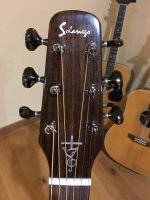 IMG_2927.jpg236 KB · Views: 254
IMG_2927.jpg236 KB · Views: 254 -
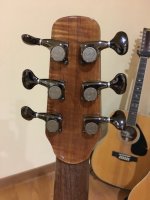 IMG_2929.jpg211.5 KB · Views: 228
IMG_2929.jpg211.5 KB · Views: 228 -
 IMG_2930.jpg207.2 KB · Views: 214
IMG_2930.jpg207.2 KB · Views: 214 -
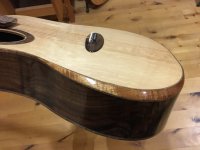 IMG_2931.jpg219.1 KB · Views: 253
IMG_2931.jpg219.1 KB · Views: 253 -
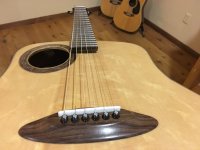 IMG_2933.jpg221.2 KB · Views: 222
IMG_2933.jpg221.2 KB · Views: 222 -
 IMG_2937.jpg295.1 KB · Views: 255
IMG_2937.jpg295.1 KB · Views: 255 -
 IMG_2972.jpg212.4 KB · Views: 353
IMG_2972.jpg212.4 KB · Views: 353
